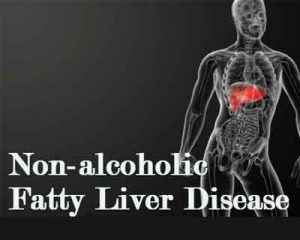- Home
- Editorial
- News
- Practice Guidelines
- Anesthesiology Guidelines
- Cancer Guidelines
- Cardiac Sciences Guidelines
- Critical Care Guidelines
- Dentistry Guidelines
- Dermatology Guidelines
- Diabetes and Endo Guidelines
- Diagnostics Guidelines
- ENT Guidelines
- Featured Practice Guidelines
- Gastroenterology Guidelines
- Geriatrics Guidelines
- Medicine Guidelines
- Nephrology Guidelines
- Neurosciences Guidelines
- Obs and Gynae Guidelines
- Ophthalmology Guidelines
- Orthopaedics Guidelines
- Paediatrics Guidelines
- Psychiatry Guidelines
- Pulmonology Guidelines
- Radiology Guidelines
- Surgery Guidelines
- Urology Guidelines
Dietary intake of vitamin E and C protects from NAFLD-related liver damage

Israel: Dietary intake of antioxidants vitamin E and C may provide protection against liver damage caused by nonalcoholic fatty liver disease, according to a recent study published in the journal Digestive and Liver Disease.
Nonalcoholic fatty liver disease affects about 25% of the adult population globally and is strongly associated with metabolic syndrome, affecting most patients who have dyslipidemia, obesity, or type 2 diabetes. Long-standing NAFLD and NASH can result in cirrhosis and its complications, including hepatocellular carcinoma.
Antioxidants are known to play a protective role in nonalcoholic fatty liver disease (NAFLD) and steatohepatitis (NASH). But the role of dietary intake of antioxidants on NAFLD and NASH is not widely studied. Dana Ivancovsky-Wajcman, School of Public Health, University of Haifa, Haifa, Israel, and colleagues determined the association between the intake of vitamin E, vitamin C and NAFL, NASH and fibrosis markers in this cross-sectional study of subjects undergoing colonoscopy.
The study sample consisted of 789 participants, and 714 had reliable FibroMax. The presence of NAFLD was evaluated by ultrasonography. The level of steatosis was defined using SteatoTest, moderate-severe NASH using new quantitative NashTest and borderline-significant fibrosis ≥ F1–F2 using FibroTest. Nutritional intake was measured by food frequency questionnaire (FFQ).
Also Read: New blood test could do away with invasive liver biopsy in NAFLD patients
Key findings of the study include:
- Adjusting for BMI, dietary and lifestyle factors, the upper tertile of vitamin E intake/1000 Kcal was associated with lower odds of NASH.
- There was an inverse association between reaching the recommended vitamin E intake and NASH.
- The upper tertile of vitamin C intake/1000 Kcal was associated with lower odds of NAFLD and NASH.
- Both vitamins were related to the level of steatosis according to SteatoTest.
Also Read: Breastfeeding longer than 6 months decreases NAFLD risk
"Our findings demonstrate that vitamin E and C intakes can be protective against liver damage associated with NAFLD," concluded the authors.
To read the full study log on to https://doi.org/10.1016/j.dld.2019.06.005

Disclaimer: This site is primarily intended for healthcare professionals. Any content/information on this website does not replace the advice of medical and/or health professionals and should not be construed as medical/diagnostic advice/endorsement or prescription. Use of this site is subject to our terms of use, privacy policy, advertisement policy. © 2020 Minerva Medical Treatment Pvt Ltd